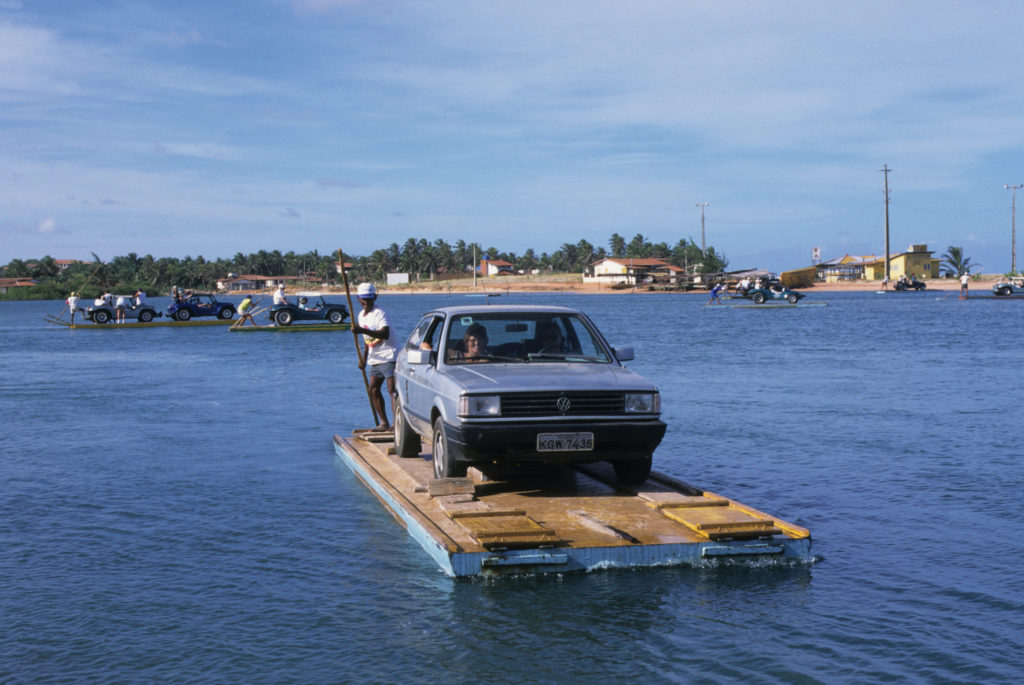BELO HORIZONTE – As governments consider how to respond to COVID-19, one potential solution has been flying under the radar: subnational development banks, or SDBs.
These institutions are similar in mission to regional or national development banks like the World Bank, the Inter-American Development Bank or the BNDES of Brazil. But SDBs operate, as the name suggests, at a much more local level. Examples include the Institute for the Development of Antioquia – IDEA in Colombia and the Development Bank of Minas Gerais in Brazil, where we both work.
These entities are often neglected by researchers in development studies, who tend to focus on the big players. But SDBs can amplify the reach and effectiveness of development networks by serving as the last-mile specialist on the ground, identifying opportunities and connecting local actors to global sustainable development-oriented funds. To do so effectively in the wake of the pandemic will require new ways of thinking about how these instruments are used.
As the world enters what the International Monetary Fund has called the “Great Lockdown,” with an unprecedented decline in economic activity that resembles the worst days of the Great Depression, there is growing consensus in favor of a massive response from the public sector through countercyclical instruments, such as income-transfer schemes and liquidity support programs. Professors Stephany Griffith-Jones and José Antonio Ocampo recently pointed out the role of development banks in this context. Because of their financial model, with a focus on returns but also on advancing the Sustainable Development Goals (SDG), these institutions are able to take more risks and support firms and projects that traditional commercial banks would not, especially under current market conditions. The existing global network of over 400 development institutions have a combined total asset base of roughly $11 trillion and commit around $2 trillion each year to projects, according to Griffith-Jones and Ocampo.
They also argue that expanding this commitment by only 20% in the context of the COVID-19 crisis would add another $400 billion to the current response efforts. As a comparison, during the 2007-2009 financial crisis, development institutions increased their lending by 36% according to a global survey with 90 banks from 61 countries.
But big regional and multilateral development banks on their own often come up short. Indeed, there is a common flaw in their deployment as countercyclical instruments that undermines their potential to fight the current economic turmoil. That is because most of them, regardless of their access to funding and trained personnel, have little or no contact with medium and small enterprises and local governments. And this is also valid for institutions with regional offices, since they are often located in the country’s capital or main business city and are focused on the biggest projects. That distance prevents them from having a more detailed perspective of local needs and concerns, including those that are driven by cultural norms and institutions – both formal and informal ones. For example, each of Brazil’s 27 states and 5,570 municipalities have their own pieces of legislation that can affect a project’s design and implementation.
It can be challenging and costly for a multilateral or regional bank to deal with this complexity without partnering with a local branch that could help it navigate through these intricate waters. That distance often creates a gap between what the development banks have to offer and what local economic actors are demanding, which may lead to an inefficient allocation of resources. Hence, for development banks to be more efficient – and to reach that 20% increase – it is crucial that they position themselves closer to the ground, acting in coordination with SDB’s, which can take advantage of their local expertise and operational capacity. Efficiency gains can come, for example, from lower transaction costs related to a faster credit-analysis process with the support of the local partner and effectiveness gains are related to the identification of a larger pool of eligible projects.
Last year, economists from 30 Latin American development banks met in Belo Horizonte, Brazil to debate common challenges and opportunities for their institutions. One of the key findings was that, regardless of whether they were located in El Salvador or Argentina, local development banks were lacking adequate funding and guarantee instruments to fulfill their potential to finance viable projects within their jurisdictions.
To fill the gap, subnational development banks should work together and tap multilateral institutions to leverage available resources. At BDMG, for example, we signed a 100 million euro agreement with the European Investment Bank (EIB) last year to finance renewable energy projects. The current agreement is already supporting three solar energy projects that will have an installed capacity of 31.3 GWh per year and avoid 47.9 tons of CO2. This partnership allowed EIB to generate development impact according to its mandate in one of the least developed areas in Brazil, thousands of miles away from its headquarters in Luxembourg.
More recently, in the context of COVID-19 response, a strategic partnership allowed the Plata Basin Financial Development Fund – Fonplata – to finance projects for municipalities in Minas Gerais, such as sewage and water treatment systems, construction and reform of health care and social assistance facilities
These examples show that effective technical and financial partnerships between development banks is not a mere operational detail, but rather a guarantee that development projects can be implemented and produce meaningful results.
Over the next few months, we will all need a new toolkit and strategy to face and beat the Great Lockdown’s economic effects. SBDs are an important tool to help us through most recovery project’s last mile implementation steps. They can help us climb out of the current economic abyss faster, especially in the context of Latin America.
—
Suchodolski is the President of the Development Bank of Minas Gerais – BDMG, First Vice-President of the Brazilian Association of Development Institutions – ABDE and Member of the Board of the Latin American Development Association – ALIDE.
Modesto Junior is the Chief Economist of BDMG







